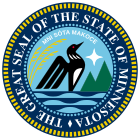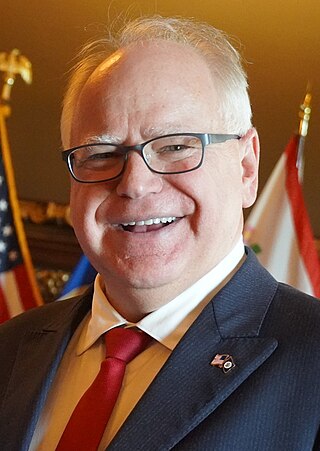
The governor of Minnesota is the head of government of the U.S. state of Minnesota, leading the state's executive branch. Forty people have been governor of Minnesota, though historically there were also three governors of Minnesota Territory. Alexander Ramsey, the first territorial governor, also served as state governor several years later. State governors are elected to office by popular vote, but territorial governors were appointed to the office by the United States president. The current governor of Minnesota is Tim Walz of the Democratic-Farmer-Labor Party (DFL).
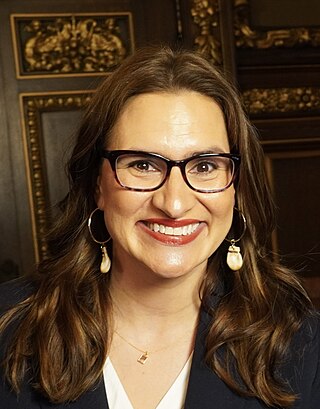
The lieutenant governor of Minnesota is a constitutional officer in the executive branch of the U.S. state of Minnesota. Fifty individuals have held the office of lieutenant governor since statehood. The incumbent is Peggy Flanagan, a DFLer and the first Native American elected to a statewide executive office in Minnesota's history.

The attorney general of Minnesota is a constitutional officer in the executive branch of the U.S. state of Minnesota. Thirty individuals have held the office of Attorney General since statehood. The incumbent is Keith Ellison, a DFLer.

The state auditor of Minnesota is a constitutional officer in the executive branch of the U.S. state of Minnesota. Nineteen individuals have held the office of state auditor since statehood. The incumbent is Julie Blaha, a DFLer.

The state treasurer of Minnesota was a constitutional officer in the executive branch of the U.S. state of Minnesota. Twenty-six individuals occupied the office of state treasurer from 1858 until the office's abolition in 2003. The final state treasurer was Carol C. Johnson, a DFLer.

Donald Mark Ritchie is an American politician and a former Minnesota Secretary of State. Ritchie was elected the 21st Minnesota Secretary of State on November 7, 2006. He was re-elected in 2010.

Minnesota is known for a politically active citizenry, with populism being a longstanding force among the state's political parties. Minnesota has consistently high voter turnout; in the 2008 U.S. presidential election, 77.8% of eligible Minnesotans voted – the highest percentage of any U.S. state or territory – versus the national average of 61.7%. This was due in part to its same day voter registration laws; previously unregistered voters can register on election day, at their polls, with evidence of residency.

The 2008 United States Senate election in Minnesota took place on November 4, 2008. After a legal battle lasting over eight months, the Democratic–Farmer–Labor Party (DFL) candidate, Al Franken, defeated Republican incumbent Norm Coleman in one of the closest elections in the history of the Senate, with Coleman's Senate predecessor Dean Barkley taking third place. Franken took his oath of office on July 7, 2009, more than half a year after the end of Coleman's term on January 3, 2009.

The secretary of state of Washington is an independently elected constitutional officer in the executive branch of the government of the U.S. state of Washington. Fifteen individuals have held the office of Secretary of State since statehood. The incumbent is Steve Hobbs, a Democrat.

On November 6, 2012, the U.S. state of Oregon held statewide general elections for four statewide offices, both houses of the Oregon Legislative Assembly, and several state ballot measures.
A general election was held in the U.S. state of Minnesota on November 4, 2014. All of Minnesota's executive officers were up for election as well as all the seats in the Minnesota House of Representatives, several state judicial seats, a United States Senate seat, all of Minnesota's eight seats in the United States House of Representatives, and several seats for local offices. A primary election was held on August 12, 2014, to nominate major political party candidates for partisan offices and candidates for nonpartisan offices.

The 2014 Minnesota Secretary of State election was held on November 4, 2014, to elect the Minnesota Secretary of State.

The 2014 Minnesota Attorney General election was held on November 4, 2014, to elect the Minnesota Attorney General.

The 2014 Minnesota State Auditor election was held on November 4, 2014, to elect the Minnesota State Auditor.
A general election was held in the U.S. state of Minnesota on November 8, 2016. All seats in the Minnesota Senate and Minnesota House of Representatives were up for election as well as Minnesota's 10 presidential electors and Minnesota's eight seats in the United States House of Representatives. A primary election was held on August 9, 2016.
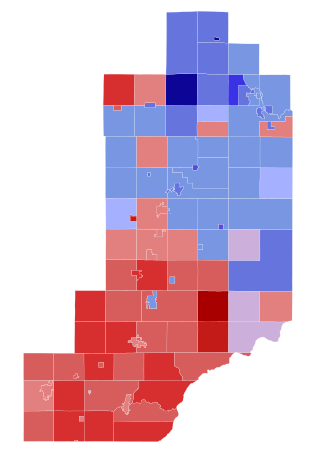
A special election was held in the U.S. state of Minnesota on February 5, 2019, to elect a new senator for District 11 in the Minnesota Senate, caused by the resignation of Democratic–Farmer–Labor (DFL) Senator Tony Lourey effective on January 3, 2019, to be appointed as commissioner of human services in Governor Tim Walz's cabinet. A primary election was held on January 22, 2019, to nominate a DFL candidate. Jason Rarick, the Republican nominee, won the special election. Rarick's win caused a special election for the seat he held in the Minnesota House of Representatives.

The 2020 Minnesota Democratic presidential primary took place on March 3, 2020, as one of 15 contests scheduled on Super Tuesday in the Democratic Party primaries for the 2020 presidential election, following the South Carolina primary the weekend before. The Minnesota primary, only the fifth in the state's history and the first since 1992, was an open primary, with the state awarding 91 delegates towards the 2020 Democratic National Convention, of which 75 were pledged delegates allocated on the basis of the results of the primary. Early voting was possible for just over six weeks beginning January 17, 2020.
Smiley v. Holm, 285 U.S. 355 (1932), was a decision of the Supreme Court of the United States involving a governor's power to veto a congressional redistricting proposal passed by a state's legislature. In an opinion by Chief Justice Charles Evans Hughes, the Court unanimously held that the U.S. Constitution did not prohibit Minnesota's governor from vetoing that state's redistricting map.

The 2022 Minnesota State Auditor election was held on November 8, 2022, to elect the state auditor of the U.S. state of Minnesota. Incumbent DFLer Julie Blaha narrowly won re-election to a second term.
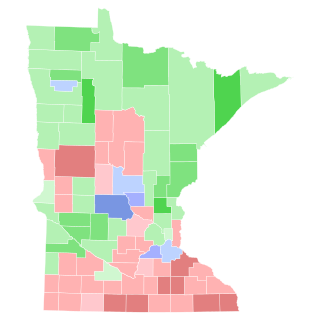
The 1934 Minnesota State Auditor election was held on November 6, 1934, to elect the state auditor of the U.S. state of Minnesota. Incumbent Republican Stafford King won re-election to a second term. King was challenged by Farmer-Labor candidate John Lyons and Democratic candidate Patrick Delaney.


